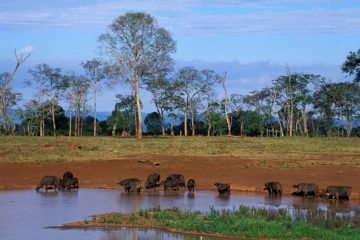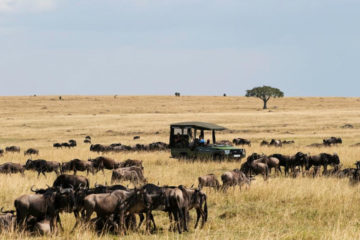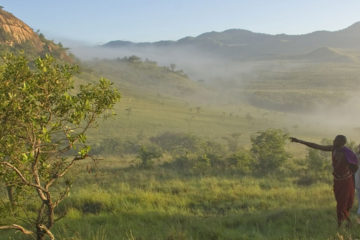Tsavo East and Tsavo West together form one of the world’s largest national parks, covering 4% of Kenya. Tsavo East NP feels wild and undiscovered; its vast open spaces are mesmerizing. The huge, semi-arid wilderness is home to most safari animals, and although wildlife densities aren’t large, spotting animals is always possible here due to the lack of foliage. The park is a stronghold for elephants, and you’ll commonly find them with a reddish appearance from the distinctive red soil of the area.
Best Time to Visit
The park doesn’t look its best in the Dry season (June to September), when the sky is hazy from the dust, but this is the best time to spot animals. The grass is much shorter than in the Wet season (October to May), so the wildlife can’t easily disappear into the bush when your vehicle approaches. And, of course, getting wet is not an issue.
Tsavo East is home to the Big Five, but it isn’t the kind of park to mark off species from your list. Elephants are abundant, and big herds can be seen crossing the endless plains. The park is also famous for its maneless lions. The most localized of the many dry country specials that can be found in the park is the fringe-eared oryx.
Tsavo East offers miles of open plains, bushy grassland and semi-arid shrub. The Galana river is a major feature in the park and is fringed by riverine forests. Another scenic highlight is Mudanda rock, a towering, quartzite (hard, metamorphic rock) formation.
Weather & Climate
Conditions stay hot and dry throughout the year at Tsavo, with the exception of the park’s higher altitudes where it gets progressively cooler as you head up the hills. The Wet season gets particularly hot, especially the interlude between the so-called ‘short rains’ at year’s end and those of the later ‘long rains’. The Dry season (June to September) brings a little relief from the heat.




